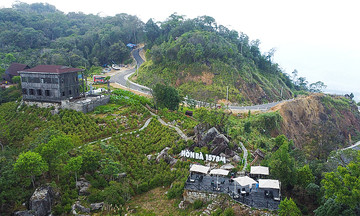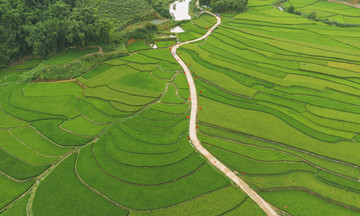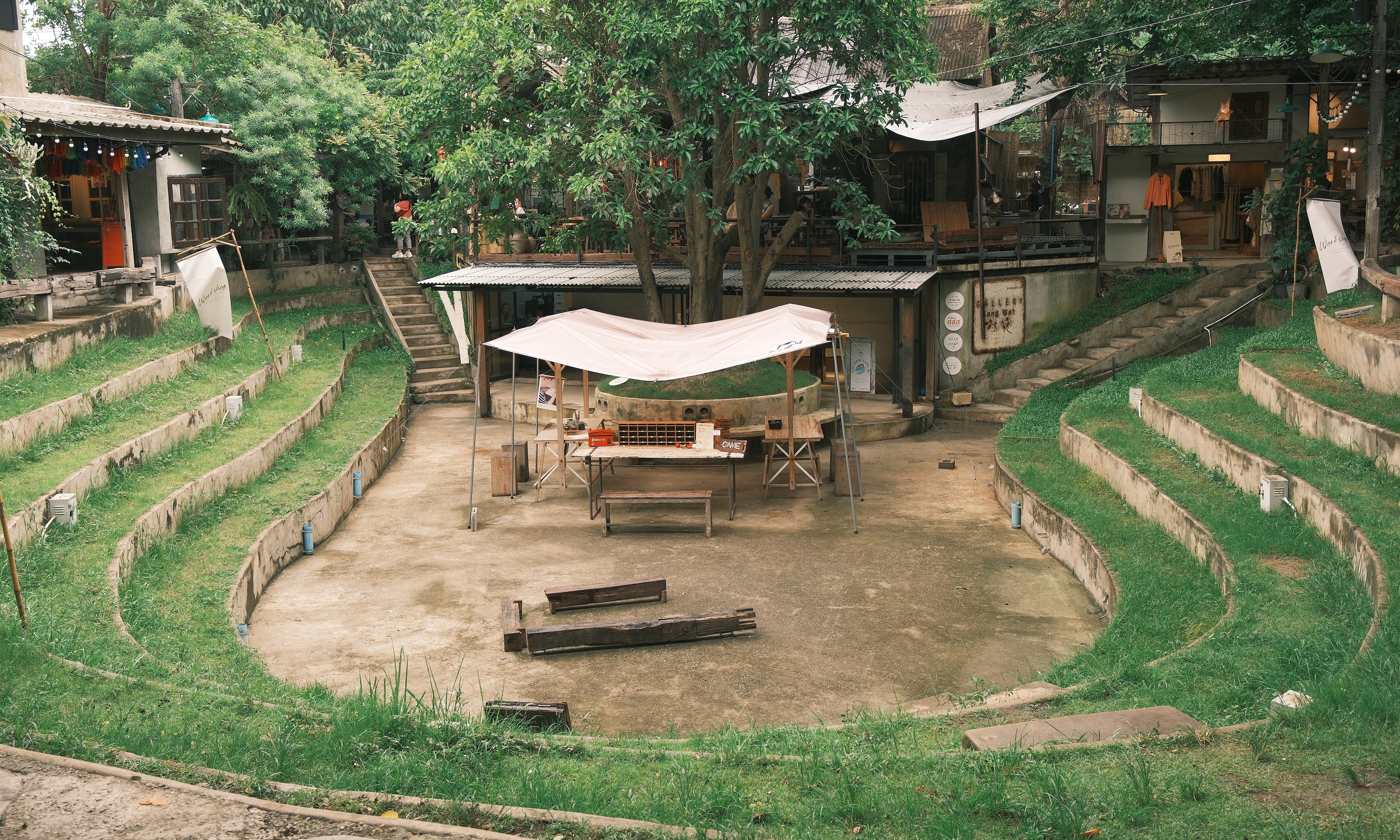 |
One spot to enjoy Chiang Mai's summer greenery is Ang Kaew Lake, an artificial lake within the main campus of Chiang Mai University, at the foot of Doi Suthep mountain. Initially built to supply water to the university, the lake has become a popular relaxation spot for locals and students, offering a tranquil atmosphere separate from the city's hustle. The lake is open to visitors free of charge from 5 a.m. to 10 p.m. daily. |
Mai Anh, a tourist from Ho Chi Minh City, first visited Chiang Mai in June, when the northern Thai city was draped in the characteristic lush greenery of summer. She noted that there are currently no direct flights from Ho Chi Minh City to Chiang Mai. Travelers typically transit in Bangkok and then take a domestic flight, with the Bangkok-Chiang Mai leg lasting about an hour.
During her 4 days in Thailand’s northern "mountain city," Mai Anh visited nature-filled destinations, temples, explored the old town, and shopped for handicrafts. Her first stop was Baan Kang Wat, an "artists' village" west of Chiang Mai, near Wat Umong at the foot of Doi Suthep mountain.
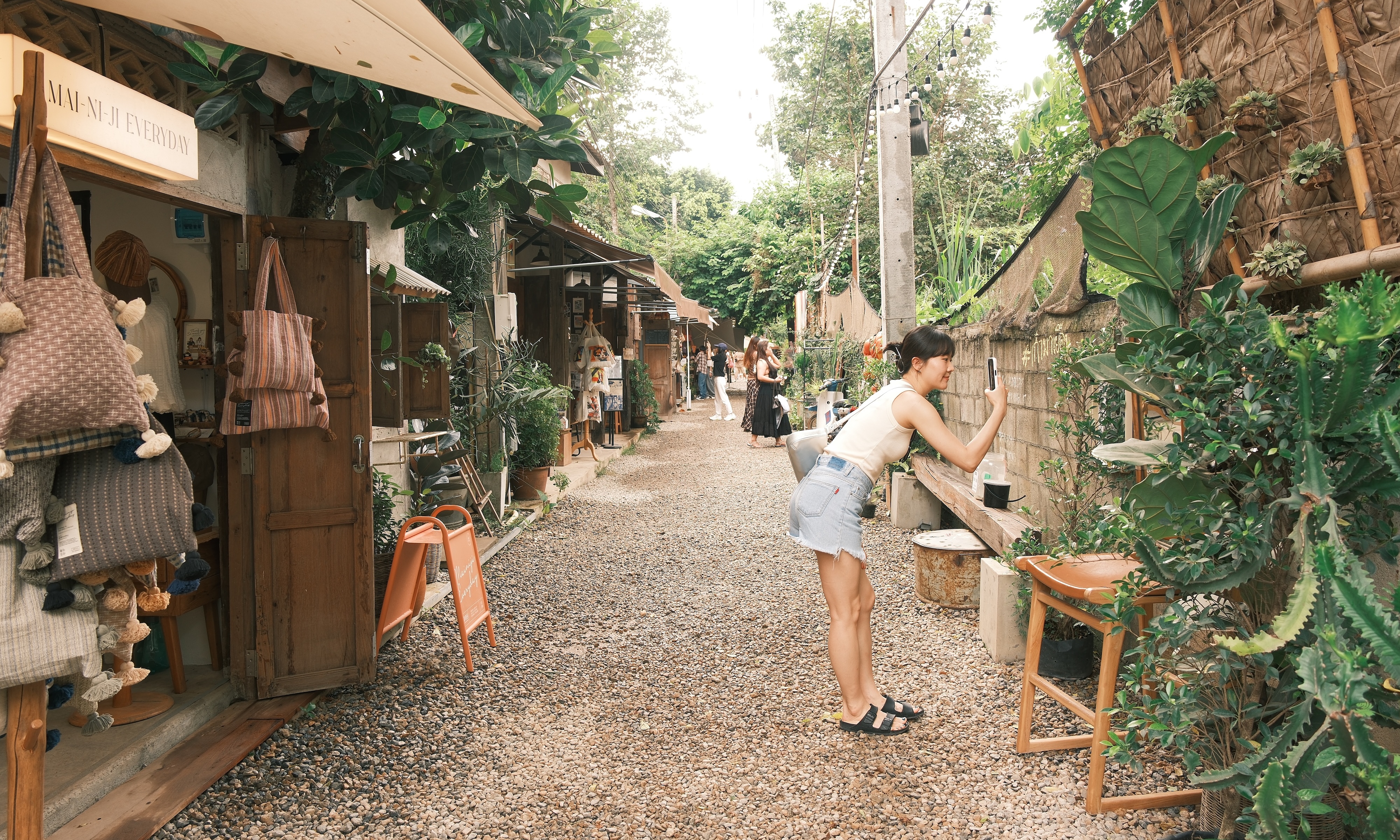 |
The lake is surrounded by lush, ancient trees, with Doi Suthep mountain in the distance. Visitors can enjoy sunrise or sunset views here. Locals often come for morning jogs, walks, bike rides, or picnics. |
Baan Kang Wat village is a collection of handmade shops, cafes, exhibition halls, workshop spaces, and outdoor art performance areas, nestled within a lush, green landscape.
Visitors can participate in workshops like notebook making, printmaking, painting, fabric dyeing, and jewelry making, shop for unique handcrafted items, and relax in the cafes. The shops are owned by local artists and craftspeople, offering one-of-a-kind creations.
"Every corner of the artists' village is picturesque, filled with visitors checking in and creating personalized handicrafts," Mai Anh said.
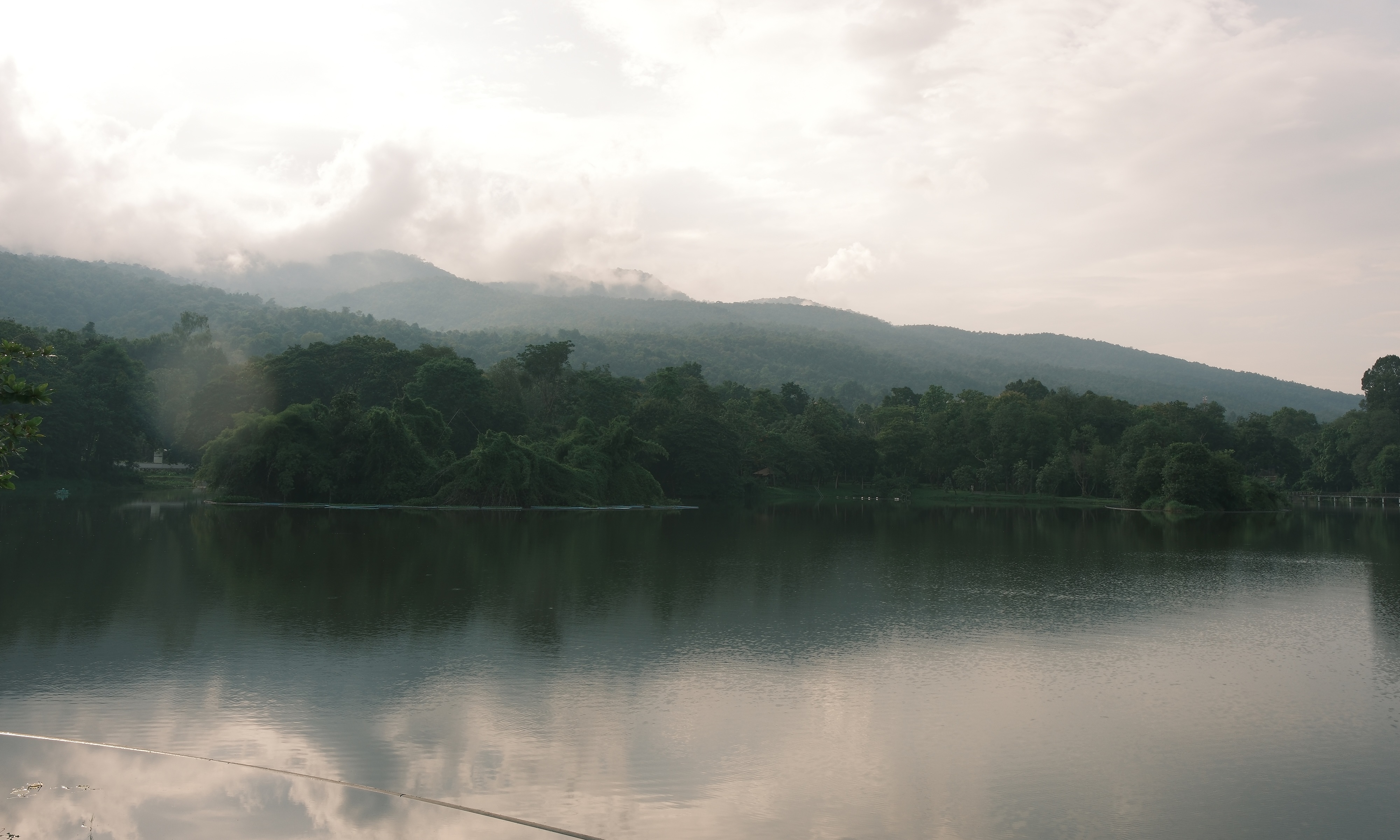 |
A temple situated on a central road in the Old Town, with Doi Suthep mountain in the distance. With around 36 temples in the Old Town area, visitors can easily stop by any temple for worship during their strolls. |
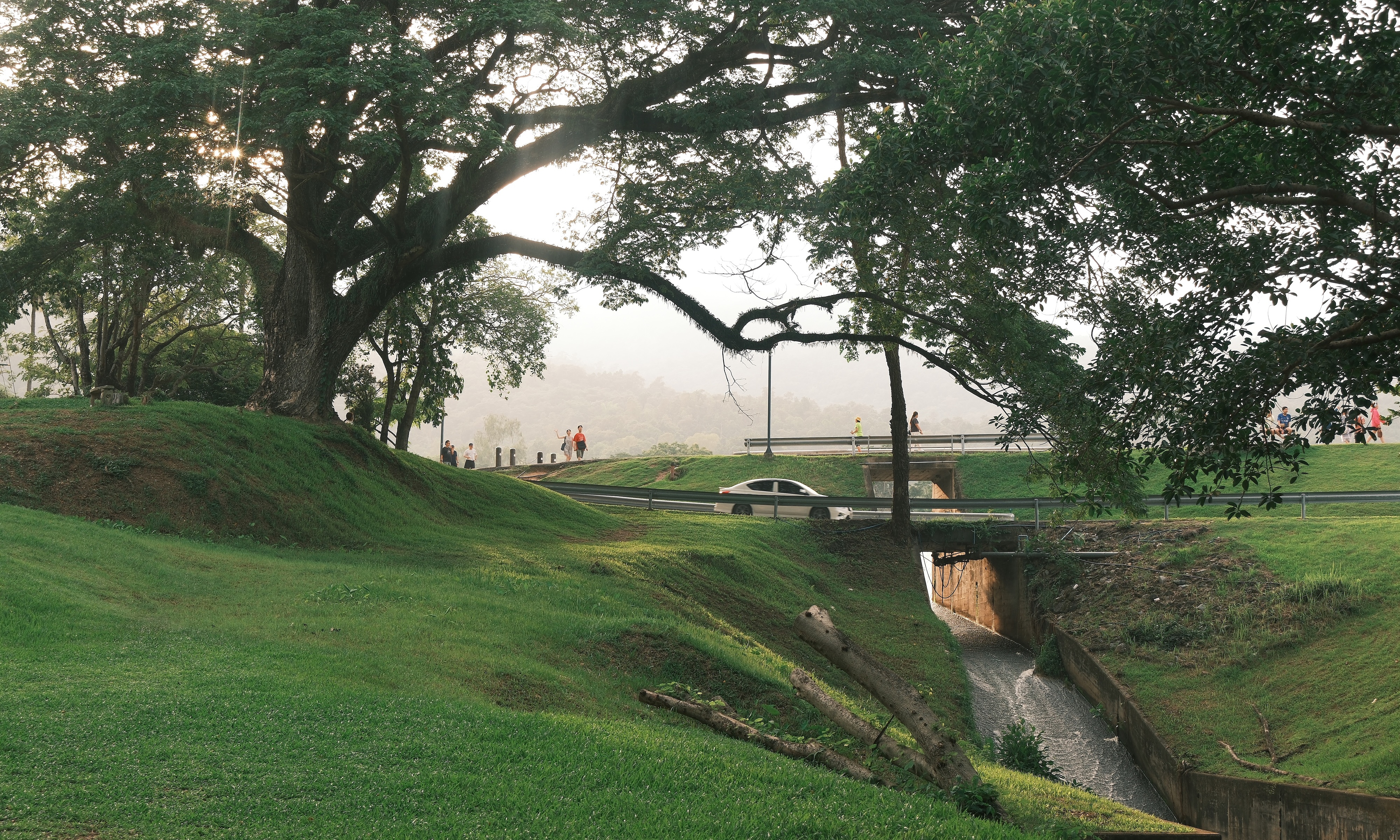 |
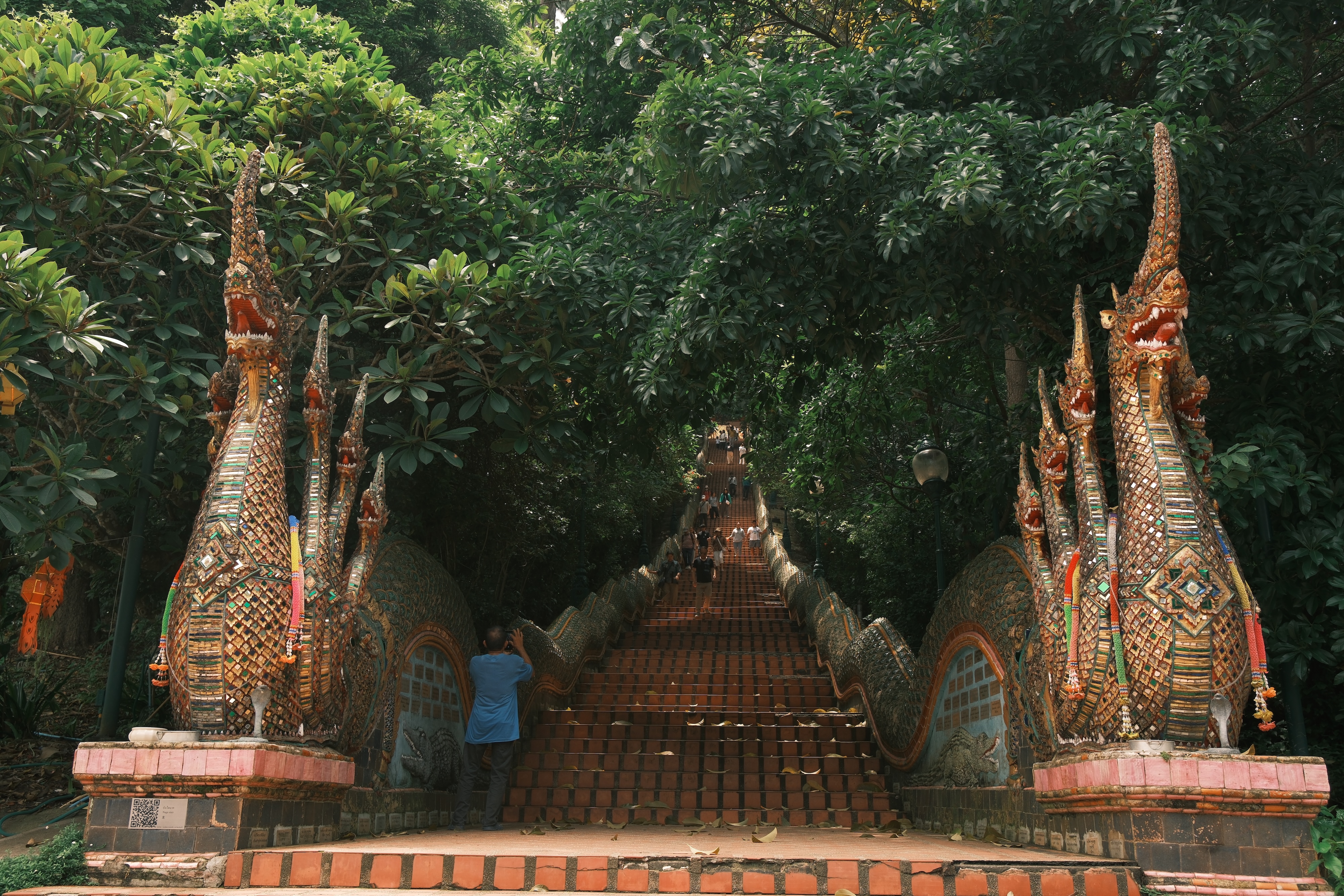 |
 |
On her second day in Chiang Mai, Mai Anh visited Doi Suthep Temple, officially known as Wat Phra That Doi Suthep. Located atop Doi Suthep mountain, the Buddhist temple offers panoramic views of Chiang Mai and is considered one of the most important pilgrimage sites in northern Thailand. The temple features a gleaming golden chedi, intricate carvings, and architecture reflecting Lanna culture.
Visitors can choose to climb the 306 stone steps (pictured before), flanked by naga serpent railings, or take the elevator. The temple's atmosphere is particularly pleasant in the summer, with cool weather, lush greenery, and the sounds of birdsong and rustling leaves in the morning breeze.
Wat Phra That Doi Suthep, built in the 14th century, is associated with the legend of a white elephant seeking sacred ground, and has been a symbol of faith and cultural pride for the people of Chiang Mai for centuries.
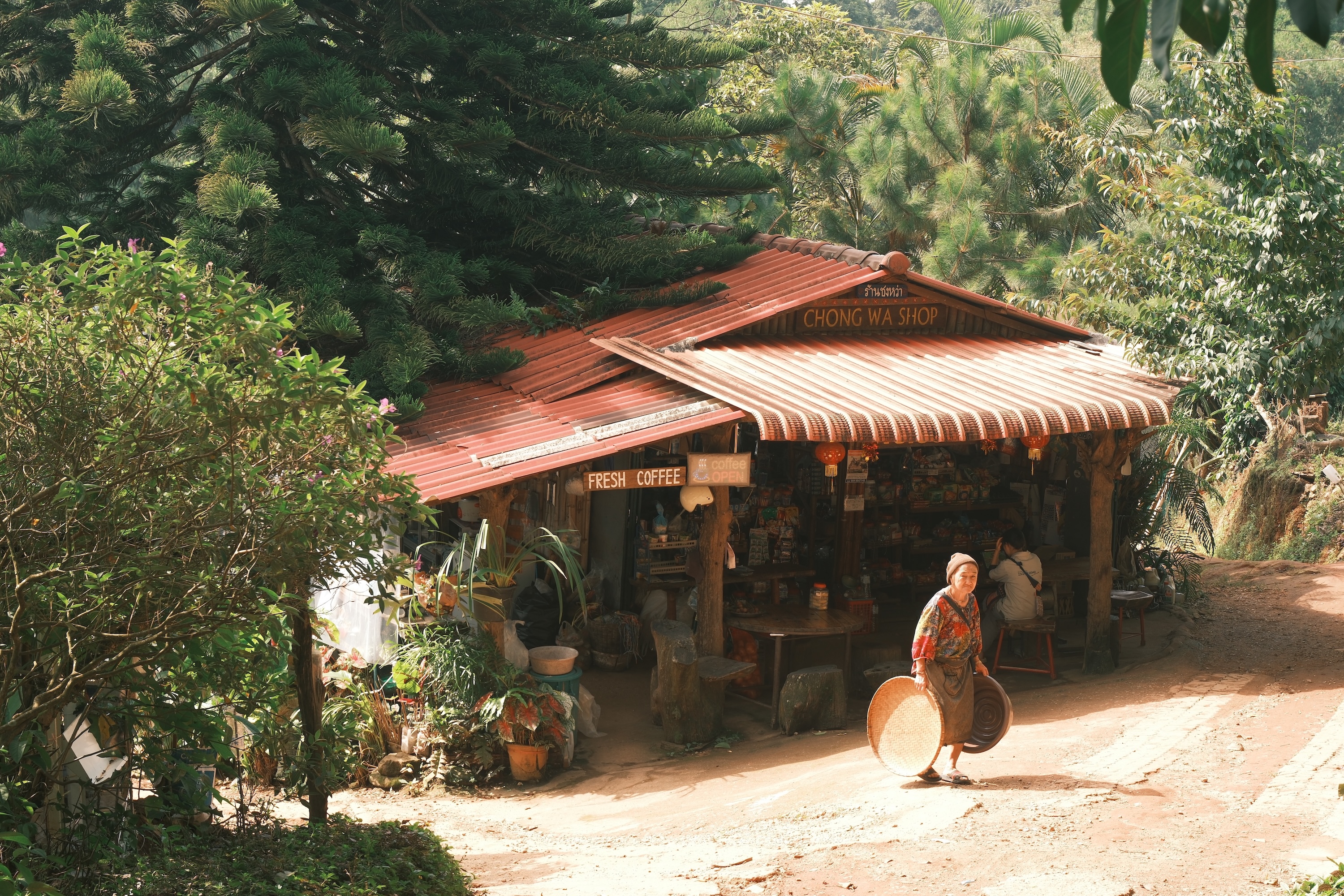 |
 |
Leaving Wat Phra That Doi Suthep, Mai Anh visited Khun Chang Kian, also known as Baan Khun Chang Kian, a White Hmong village in Doi Suthep-Pui National Park, about 28 km northwest of Chiang Mai. Situated at an altitude of about 1,350 m, within the agricultural research station of Chiang Mai University, the village is surrounded by coffee, strawberry, and longan orchards, along with wild Himalayan cherry blossom trees. These trees typically bloom in January and February.
Khun Chang Kian exudes rustic charm with its tree-lined dirt roads, simple wooden houses, friendly Hmong people, and small coffee shops. The village is open daily from 6 a.m. to 8 p.m., with free admission. From the Doi Suthep area, visitors can reach the village by motorbike or Songthaew, Chiang Mai's characteristic mode of transport.
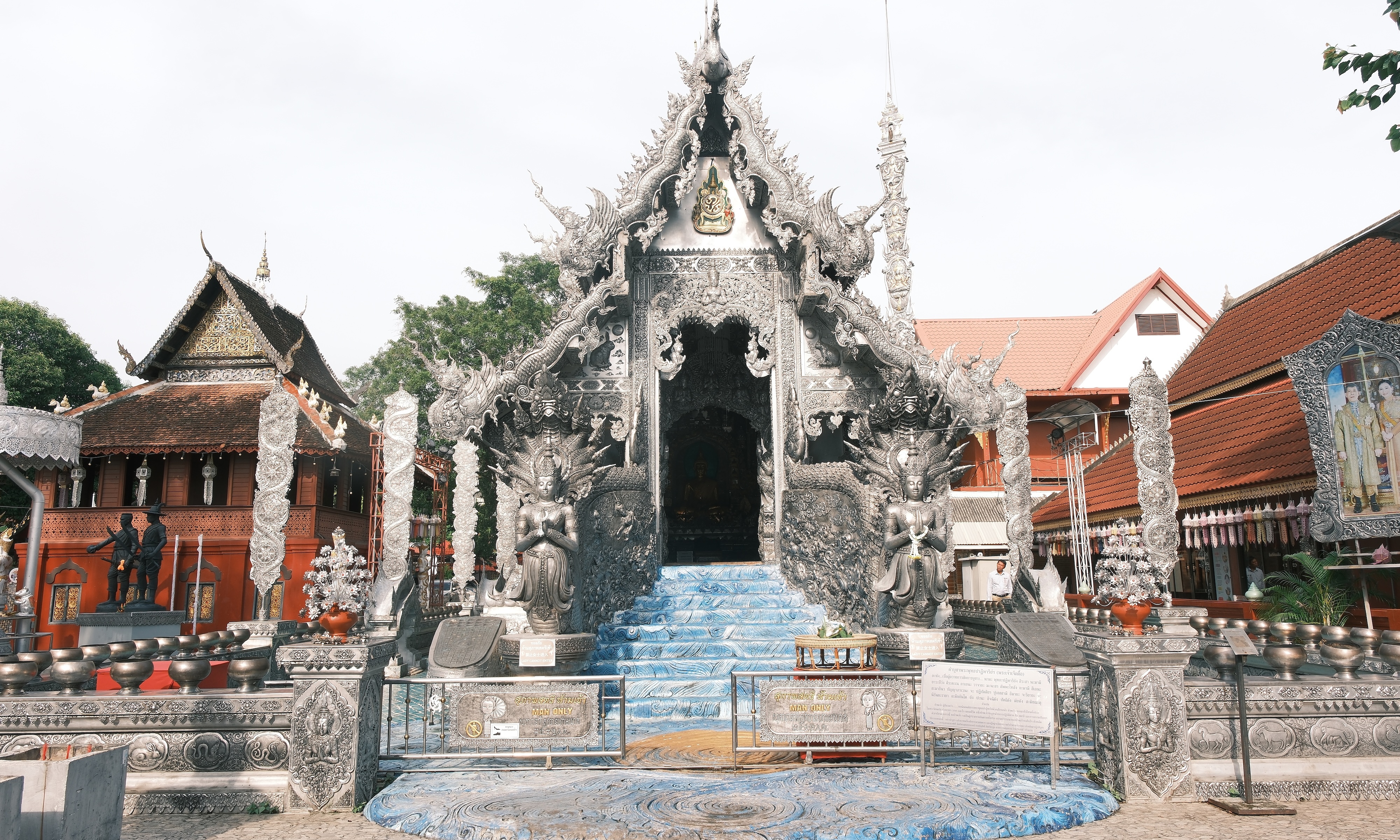 |
On her third day in Chiang Mai, Mai Anh woke up early to visit temples and explore the Wualai silver-making district.
Wat Sri Suphan (Silver Temple), located on Wualai Road, was built in the early 16th century and restored between 2008 and 2016. The temple is renowned for its silver-clad Ubosot (ordination hall), intricately carved with silver, nickel, and aluminum, depicting Buddhist legends, rural scenes, and zodiac motifs in Lanna style.
Beneath the gleaming metal lies a classic Lanna structure with tiered roofs, carved teak columns, and ornate eaves. The temple complex also includes a Viharn (main prayer hall), a Chedi (stupa), and a workshop where visitors can watch silversmiths at work. Following local custom, only men are allowed inside the Ubosot.
In the afternoon, Mai Anh and her friends joined a walking tour of the Old Town. "Chiang Mai manages to retain the tranquility of its mountains and forests, along with centuries-old architecture, while also offering many modern amenities," Mai Anh commented.
The Old Town walking tour began at Tha Phae Gate, one of Chiang Mai's most prominent historical landmarks, located on a section of the ancient city wall built in the 13th century. It once served as the main eastern entrance, welcoming monks, merchants, and envoys, and played a vital role in the city's trade connections.
The gate's architecture features sturdy red brick, crenellated walls, and prang-style corner towers, reflecting Lanna defensive design. Today, the square in front of the gate is a lively gathering place, hosting major festivals like Loy Krathong, Songkran, and the weekend walking street market.
 |
Near Tha Phae Gate is Wat Muen Lan, the "Temple of Infinite Riches," distinguished by its multi-tiered white Chedi. The bell-shaped body of the Chedi is gilded, inlaid with ceramics and mosaic glass.
The temple's two-story Ho Trai (library) has a solid stone lower level with a gilded naga archway, and a wooden upper level with intricately carved railings and an eye-catching rooftop spire. Wat Muen Lan also features the Ho Rakang bell tower with its pyramidal roof, decorated with stucco naga motifs and a gilded finial.
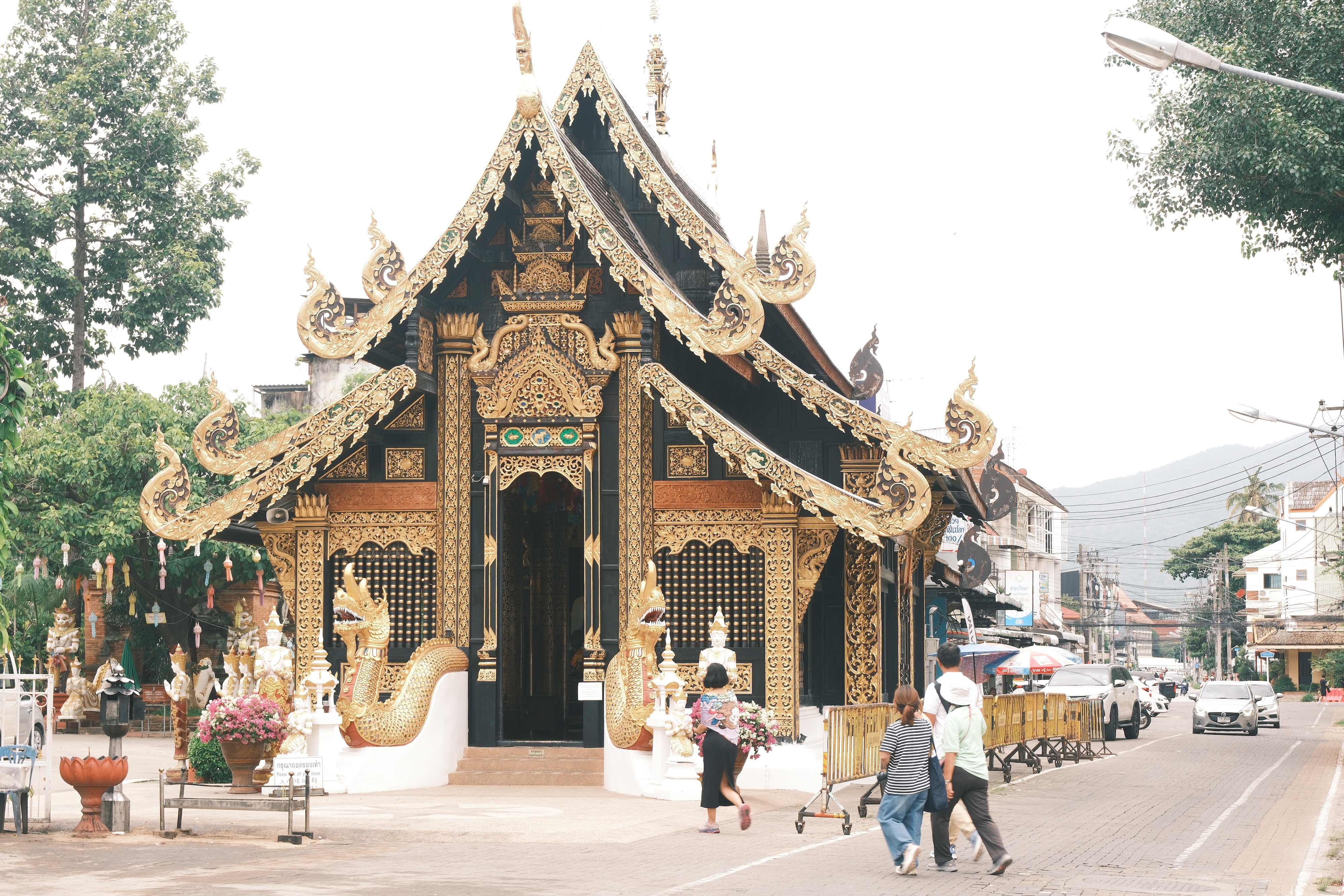 |
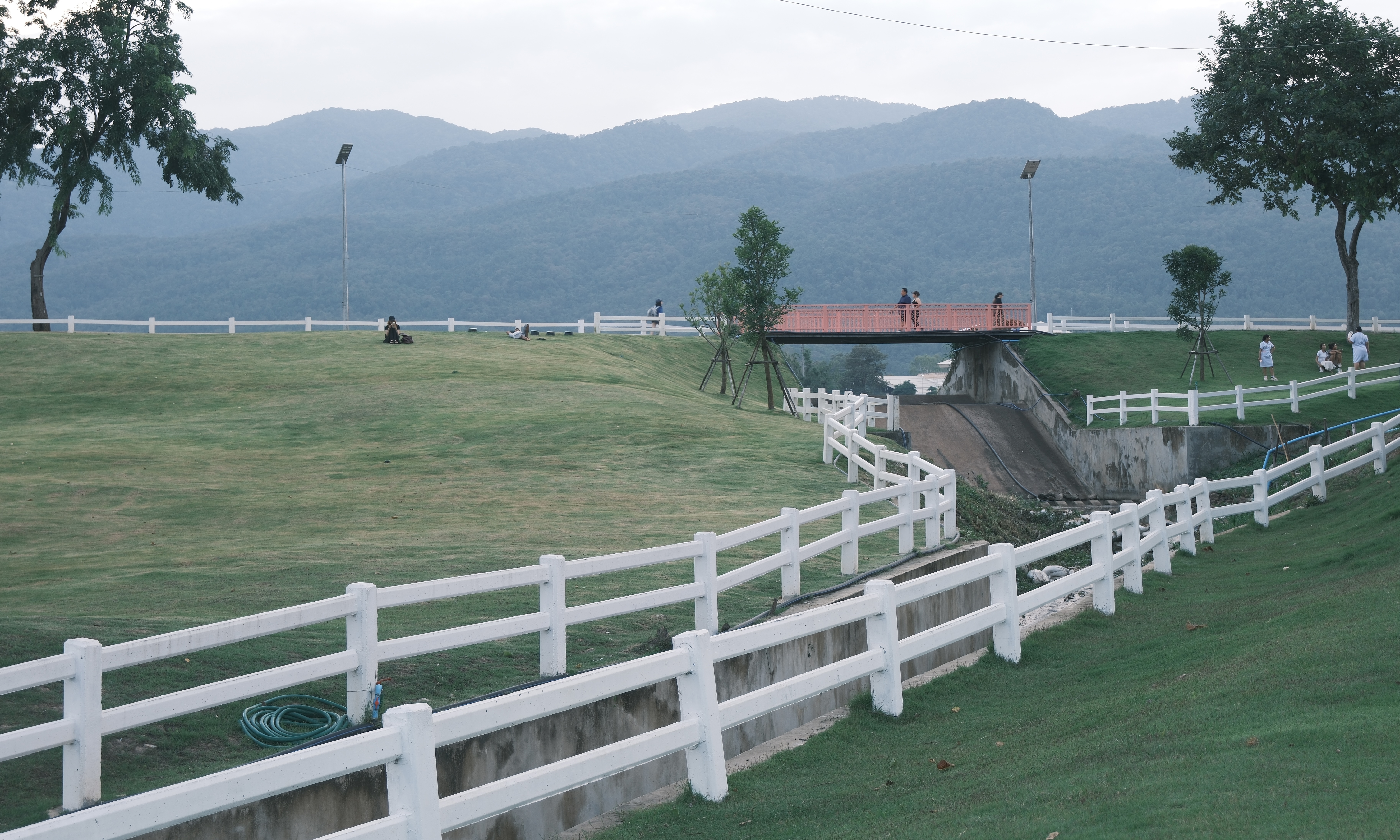 |
On her last day in the mountain city, Mai Anh and her friend visited Chaloem Phrakiat Park (Suan Chaloem Phrakiat) for a picnic. This suburban park, located near the ring road and provincial administrative area, is open free of charge from early morning to late evening. The park boasts expansive lawns, lush trees, paved walkways, and an artificial lake.
During winter, the park often hosts the Chiang Mai Flower Festival. The best time to visit is during sunset or evening when the park is illuminated. Free parking is available near the food stalls. Visitors are allowed to bring pets, but food and drinks are generally restricted. Chaloem Phrakiat Park is considered a green oasis in Chiang Mai.
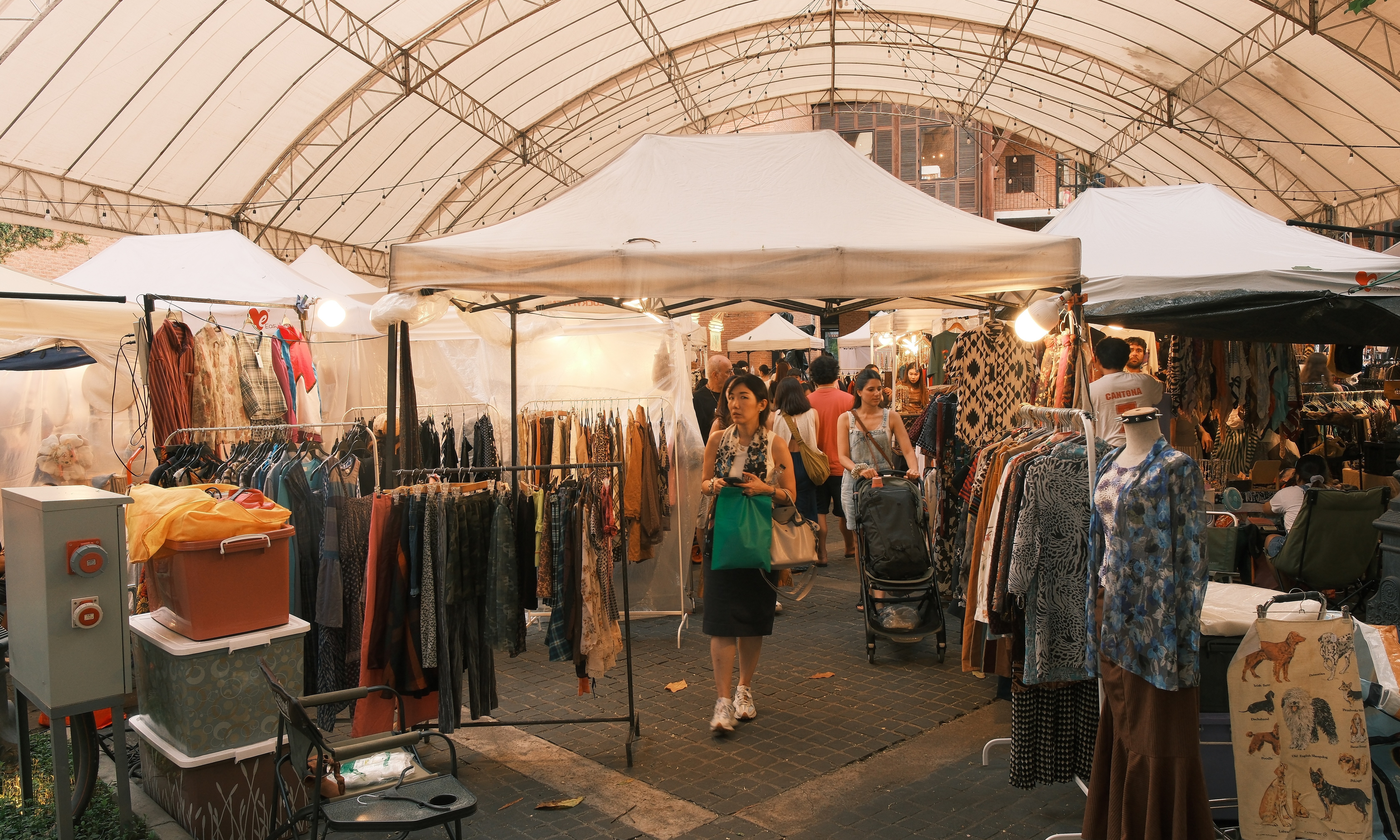 |
Before concluding her trip, Mai Anh took time to visit some of the city's markets. One Nimman, a cultural and entertainment complex in the heart of Chiang Mai's Nimmanhaemin area, features a mix of indoor and outdoor spaces.
Open from 11 a.m. to 10 p.m., the complex houses fashion boutiques, handicraft shops, cafes, restaurants, and art galleries. The central market area often hosts performances, street food vendors, and a weekend night market.
"The secondhand stalls here offer unique, high-quality items at affordable prices. I spent nearly 2 million VND on clothes and bags," Mai Anh shared, adding that she plans to return to Chiang Mai later in the year for the Yi Peng Lantern Festival.
Bich Phuong
Photo: NVCC



